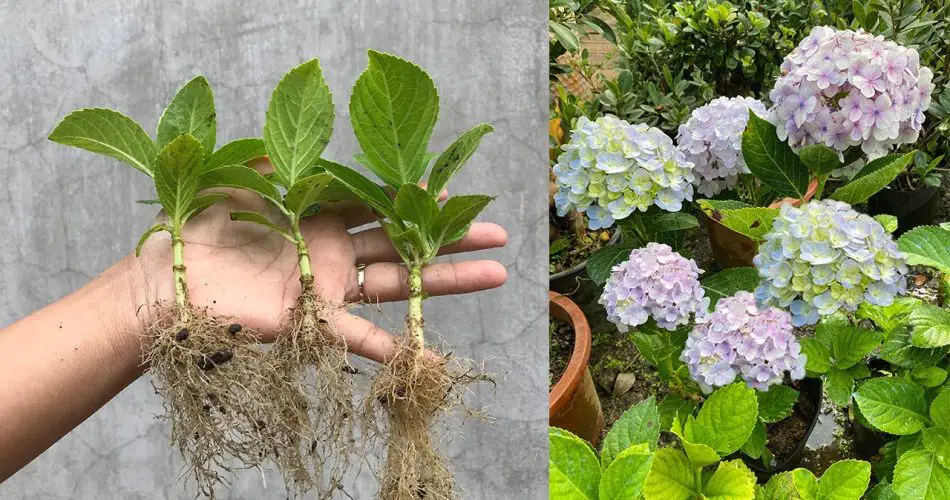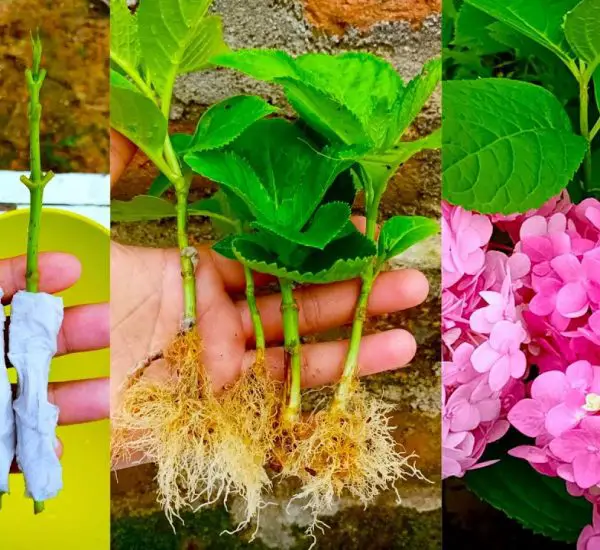Propagating hydrangeas from cuttings is a popular and cost-effective way to expand your garden or share plants with friends and family. With this simple and effective method, you can encourage hydrangea cuttings to take root quickly, ensuring a successful propagation process with minimal effort.
Here’s how to do it:
- Select Healthy Cuttings: Choose healthy, disease-free stems from your hydrangea plant for cutting propagation. Look for stems that are young and flexible, ideally with a few sets of leaves along their length.
- Prepare the Cuttings: Use sharp, clean pruners to take cuttings from the hydrangea plant. Each cutting should be 4 to 6 inches long and include at least two sets of leaves. Remove any lower leaves from the cutting to expose a node where roots will form.
- Dip in Rooting Hormone (Optional): While not strictly necessary, dipping the cut end of each hydrangea cutting in rooting hormone can help stimulate root growth and increase the chances of successful propagation.
- Plant in Potting Mix: Fill small pots or trays with a well-draining potting mix. Make a hole in the soil with a pencil or similar tool, then insert the cut end of each hydrangea cutting into the hole, pressing the soil gently around the base to secure it in place.
- Provide Adequate Moisture: Water the soil thoroughly after planting the hydrangea cuttings to ensure good soil-to-cutting contact and encourage initial root growth. Keep the soil consistently moist but not waterlogged throughout the rooting process.
- Create a Humid Environment: To promote humidity and prevent excessive moisture loss from the leaves, cover the pots or trays with a clear plastic dome or plastic wrap. This helps create a mini greenhouse effect that encourages root development.
- Place in Indirect Light: Position the pots or trays in a bright, indirect light location, away from direct sunlight. Avoid exposing the cuttings to intense sunlight, as this can cause them to wilt or dry out.
- Monitor and Wait: Check the soil moisture regularly and mist the leaves if they appear dry. Be patient, as hydrangea cuttings can take several weeks to root. Once roots have formed and the cuttings show signs of new growth, they can be transplanted into larger pots or directly into the garden.
By following these steps, you can propagate hydrangeas from cuttings with ease and efficiency, allowing you to enjoy new plants in your garden in no time. This method is ideal for gardeners of all skill levels and offers a rewarding way to expand your hydrangea collection or share the beauty of these beloved plants with others.
Show Comments




